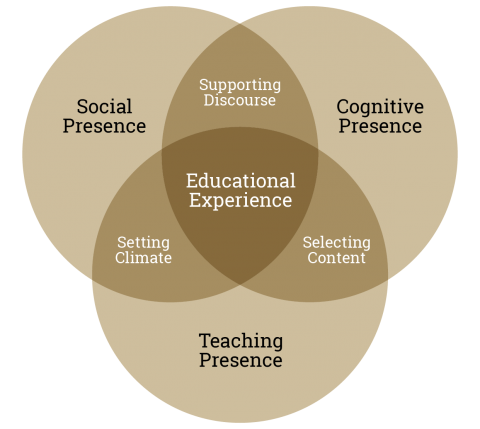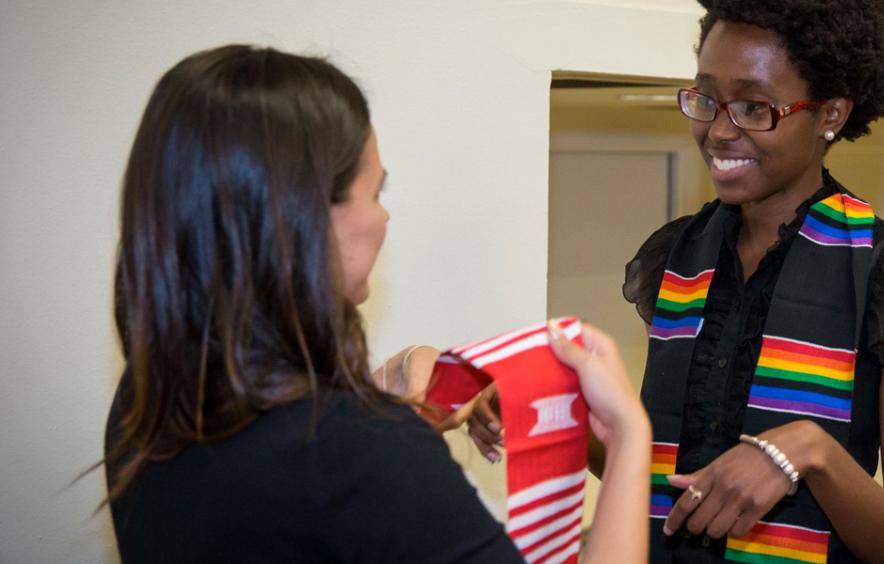The Community of Inquiry Model
The Community of Inquiry model was developed from a study by Garrison, Anderson, and Archer that was conducted in 2001. The model of a community of inquiry consisted of three key elements of an educational experience: Teaching presence, cognitive presence, and social presence. See below for specific descriptions of how these elements work together to impact a student's educational experience.
Recommended Reading

Educational Communities of Inquiry:
Theoretical Framework, Research and Practice
Communications technologies have been continuously integrated into learning and training environments which has revealed the need for a clear understanding of the process...
Read it at DUNot at DU? Find it online.

Creating a Community of Inquiry in LargeEnrollment Online Course:
An Exploratory Study on the Effect of Protocols within Online Discussions
It can be difficult to foster focused and effective communication in online discussions within large classes. Implementing protocols is a strategy that may help students communicate more effectively...
Read the Article
Digging Beneath the Surface:
Analyzing the Complexity of Instructors' Participation in Asynchronous Discussion
We developed an analytical tool based on this framework in order to better understand what instructors were saying in discussions...
Read the Article
Thinking Collaboratively:
Learning in a Community of Inquiry.
Thinking Collaboratively is a theoretical and practical guide to thinking and learning in deep and meaningful ways within purposeful communities of inquiry...
Read it at DUNot at Du? Find it online

E-Learning in the 21st century
A framework for research and practice, Second edition
The second edition of E-Learning in the 21st Century provides a coherent, comprehensive, and empirically-based framework for understanding e-learning in higher education...
Read it Online






